Wonderful Wild at the Tour de Turtles
What are you willing to get up before dawn to experience? If you’re anything like me, this list is relatively short: a travel day that ends somewhere new and full of adventure. Sunrise on a morning where the clouds are gathered promisingly on the horizon. A fishing charter to cast a line over the still water at dawn.
Or, once a year, to watch sea turtles return to the ocean after a long night of laying their eggs in a sandy nest at the kick off of the Tour de Turtles.
Words and photos by Sara Sheehy
Live Wildly Lead Adventurist
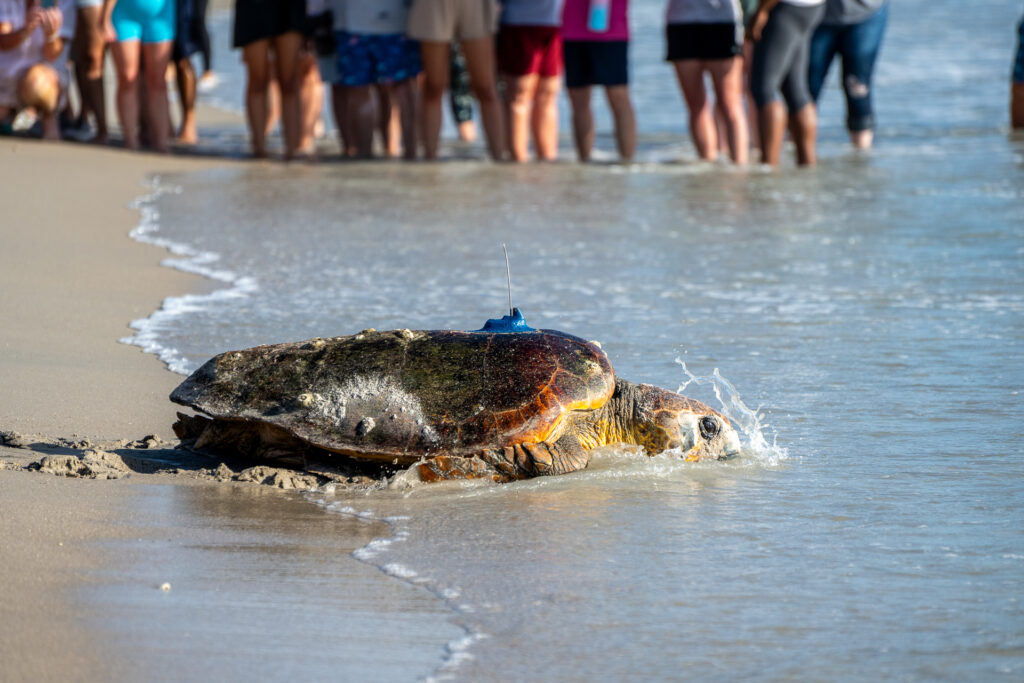
The Sea Conservancy’s Tour de Turtles is a journey through science, research, and migration through the lens of leatherback and chelonian sea turtles. Part marathon, part science adventure, the Tour de Turtles in Florida kicks off each year on the sandy shores of Anna Maria Island, Vero Beach, and Melbourne Beach. It’s an opportunity to connect with one of the ocean’s most charismatic species and contribute to the larger cause of sea turtle conservation.
What is Tour de Turtles?
Tour de Turtles is an annual event that follows the migration of sea turtles from their nesting beaches to their foraging ground. Created with the idea that “saving sea turtles is a marathon, not a sprint,” the Sea Turtle Conservancy works with partners and sponsors to affix satellite trackers on the shells of a handful of leatherback and chelonian (hard-backed) sea turtles. This work is done carefully and under permit at locations in Florida, Nevis, and Costa Rica.
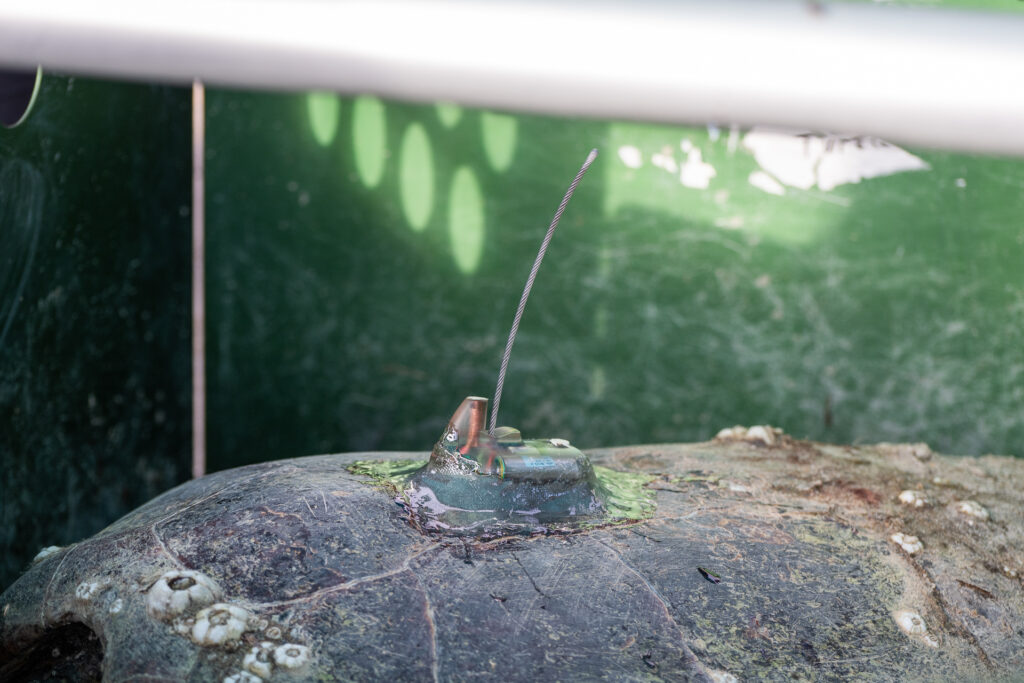
Once outfitted with their trackers, it’s off to the races! The turtles’ locations are monitored remotely for three months, and whichever turtle travels the furthest “wins.” There are no prizes involved (other than bragging rights, of course), but throughout it all, scientists and the public are learning about the turtles, their movements, their obstacles, and their habits. This data is critical for both conservation efforts and to allow us, the public, to share in the fun of learning about these incredible species.
Worth the Wake-Up: A Tour de Turtles Experience
Bleary-eyed but excited, I wake well before dawn for my Tour de Turtle adventure. Camera? Check. GoPro? Packed. Water, bug spray, and a breakfast snack? All ready to go. It’s too early to find caffeine, but I’m hopeful that the energy of the crowd will keep me abuzz with excitement. I drive the short distance from my seaside hotel to Archie Carr National Wildlife Refuge.
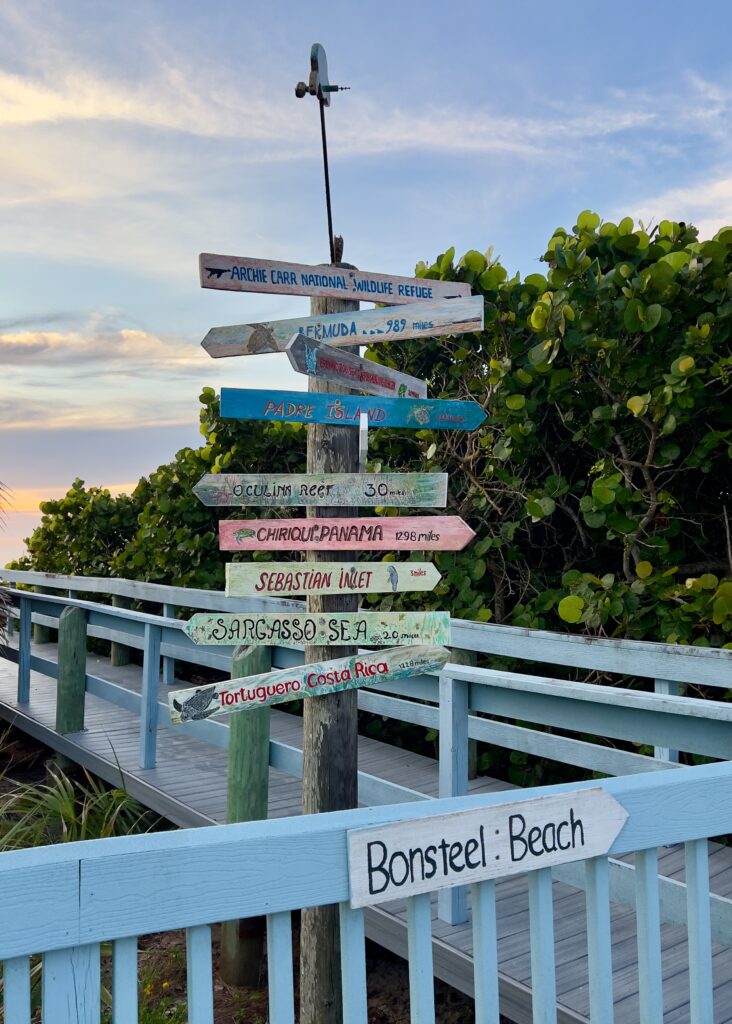
Archie Carr National Wildlife Refuge was established in 1989 to protect sea turtles. Spanning over 20 miles of beach in Brevard and Indian River Counties, the Refuge is home to the most important sea turtle nesting habitat in the United States. According to our friends at the Sea Turtle Conservancy, more loggerhead turtles nest within the Refuge than anywhere else in the Western Hemisphere.
And it’s these threatened turtles that I hope to see this morning.

The scientists have been on the beach for hours before I arrive, though the sun hasn’t yet peaked over the horizon. They were up late last night, working under a strict permit with the Florida Fish and Wildlife Commission to temporarily hold a loggerhead turtle who emerged from the sea to lay her eggs. The team hopes to affix trackers on two turtles, but this night, only one mama turtle has ventured onto shore.
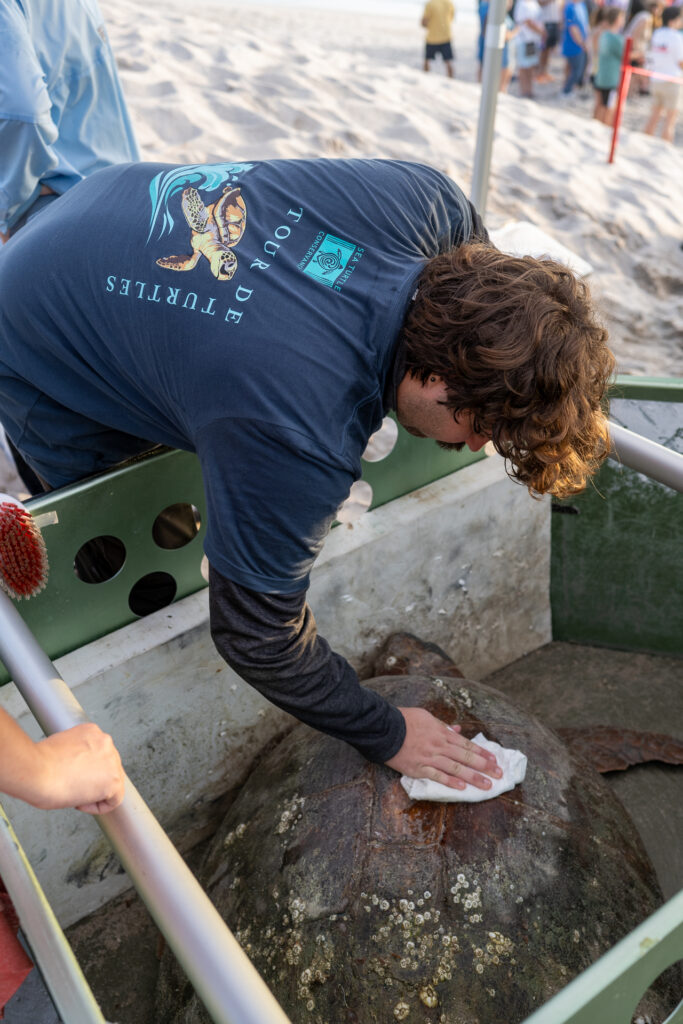
Held in a turtle-shaped pen for the few hours that it takes to get her ready, the team is already hard at work examining the loggerhead’s overall health when I arrive. They are also giving her a shell scrub and preparing a spot on that shell for the satellite tracker. I watch from a careful distance while keeping an eye on the rising sun, which is painting the sky with an ombre of bright colors.
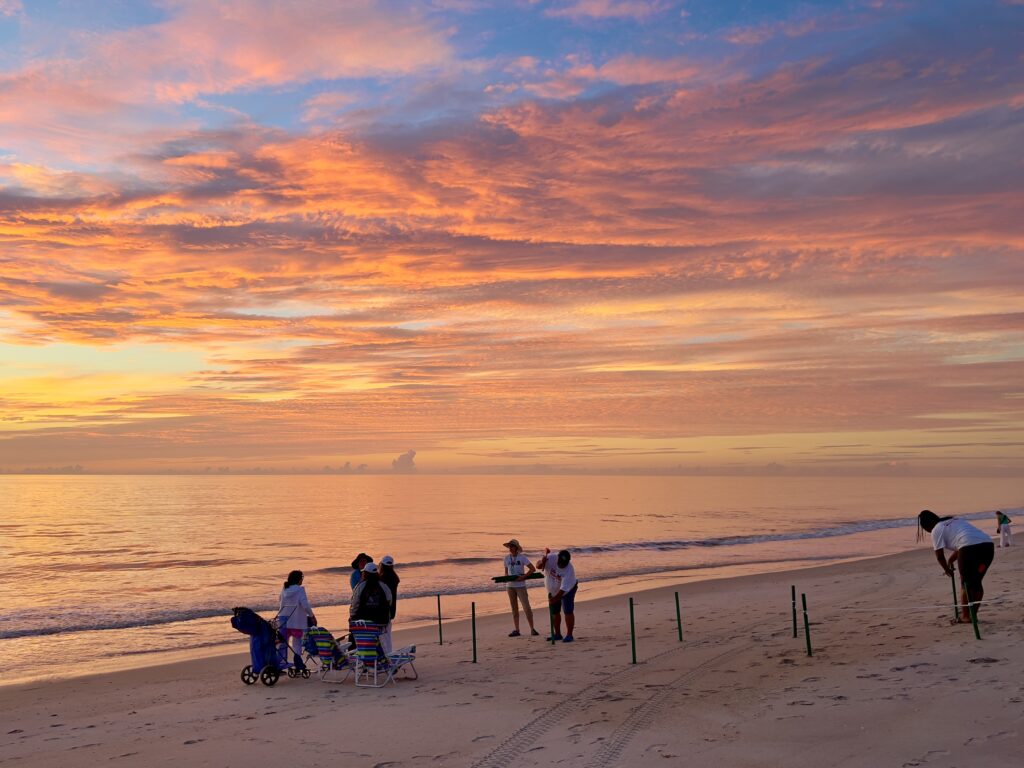
The beach is starting to fill, too. This event is open to the public, and as the thermometer ticks up on this late summer morning, people are carefully lining up against two ropes strung to allow the turtle plenty of room to make her way back to the sea. Children play in the waves while adults stand with their feet in the sand and their hands gripping sweating cups of iced coffee.
Suddenly, I see a commotion down the beach a short way. “Turtles!” I hear, and I hustle over to the small crowd that has gathered. Baby loggerhead turtles, no more than two or three inches across, are leaving their nest and moving with an ingrained urgency to reach the water. They fall head-over-tails into even the smallest footprint, struggling to right themselves and then using their tiny flippers to propel themselves down the beach to the sea.
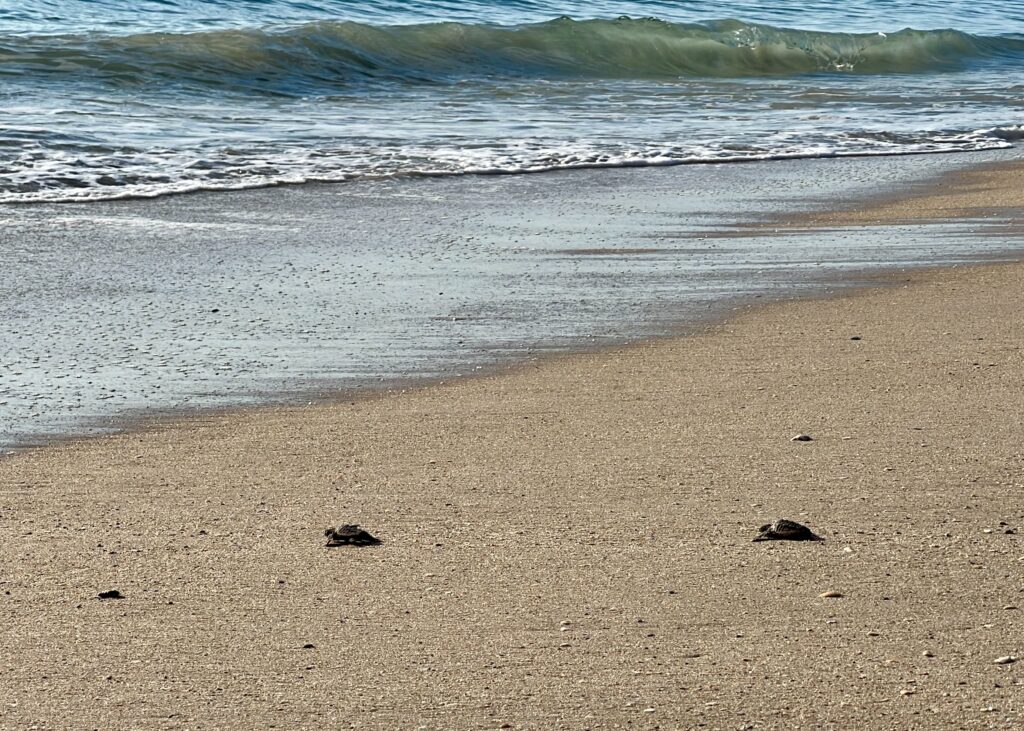
Children squeal in delight, and we adults aren’t too far from joining them. We all give them a respectful space to make this most ancient of journeys, resisting the urge to help them when they fall into yet another footprint. I understand now why, during sea nesting season, even the shallowest unfilled holes from a day playing on the beach can be a death sentence for a turtle hatchling.
You can help! Find out how.
I’d like to say that I kept it together watching these small sea creatures make their way to the ocean, but I did not. Behind my sunglasses, tears welled in my eyes as I thought of how just-hatched turtles have been making this identical journey for over 110 million years. Only about one out of every 1,000 sea turtles will survive into adulthood. Habitat loss and human-related threats continue to make this already-harrowing path to adulthood even harder.
Watch: Turtle hatchlings make their way to the ocean in Archie Carr National Wildlife Refuge
Once all the hatchlings have made it to the water, I turn my attention back to the turtle who has made it to adulthood and just safely dug a nest of eggs into the beach. With her satellite tracker snugly attached, it’s time for her to return to the water, too.
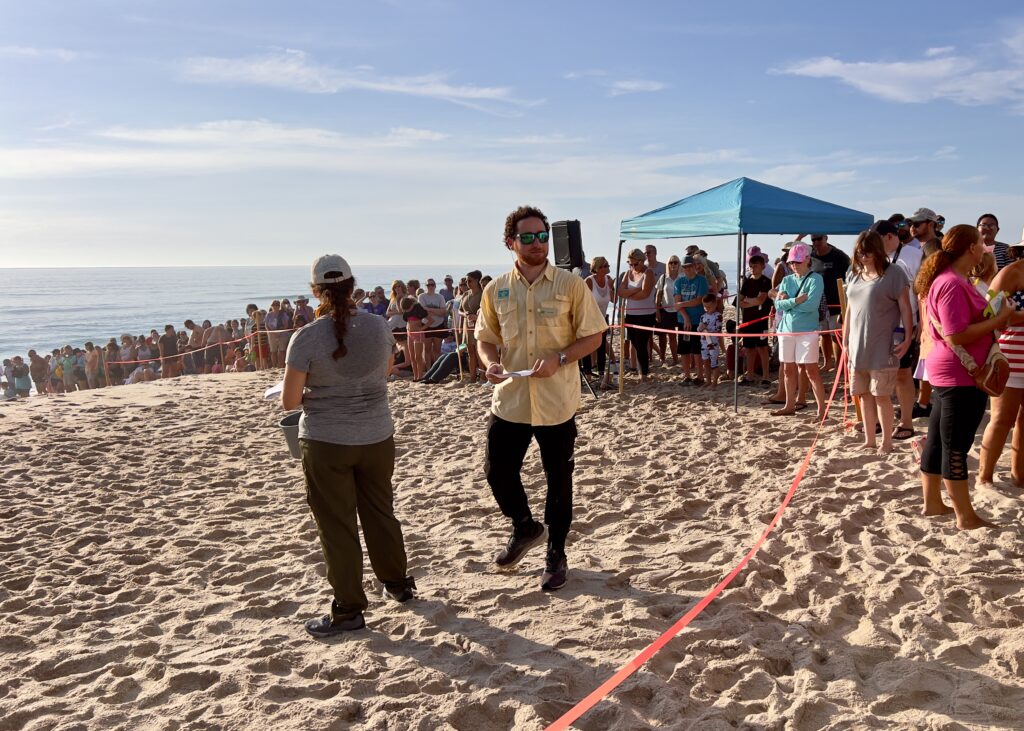
The Sea Turtle Conservancy has kept us entertained by sharing sea turtle facts and telling stories of the long swims that the turtles take between their nesting and feeding grounds. That’s part of the thrill of the Tour de Turtles – with a satellite tracker attached, we can all now follow this one turtle’s journey. How far will she swim? Where will she go? Will she ever come back to Florida?
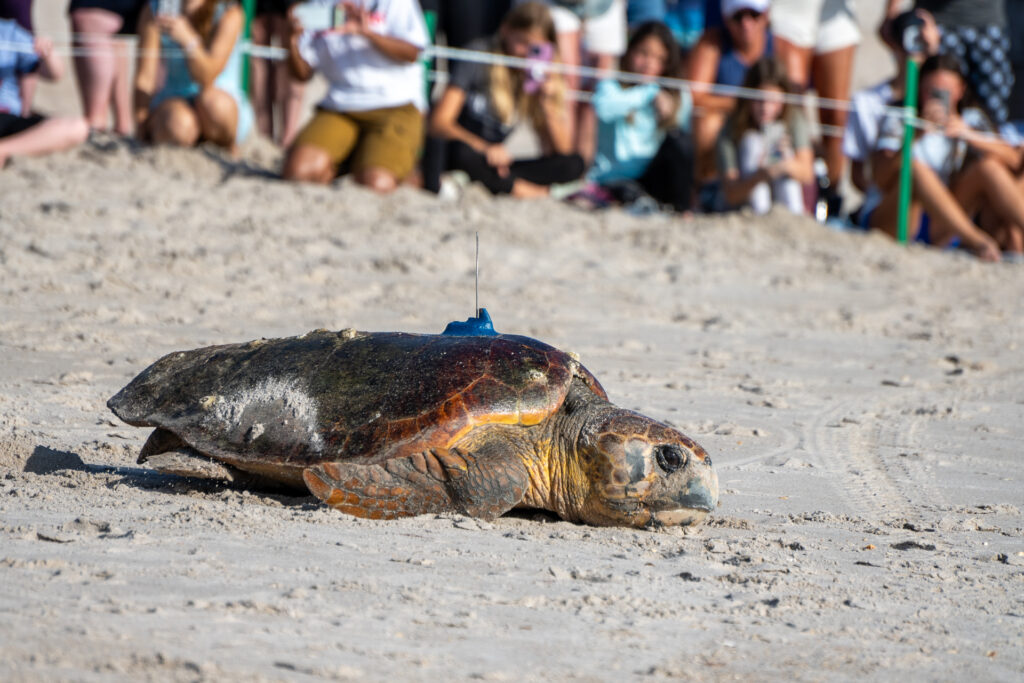
The gate to her temporary pen is opened, and she makes a slow but dedicated trek toward the water. Using her powerful flippers, she digs into the sand front and back and hitches her way down the beach, her shell dragging a smooth path in her wake. As we all watch in awe, she takes a few short breaks to catch her breath. It’s been a long night and a longer morning, and I can feel her desire to be back in the embrace of her ocean home.

When she finally reaches the water, the waves splashing around her face, we all let out a cheer. We keep watching well after she has gone, looking for a glimpse of this solitary turtle who has imprinted herself on our collective heart.
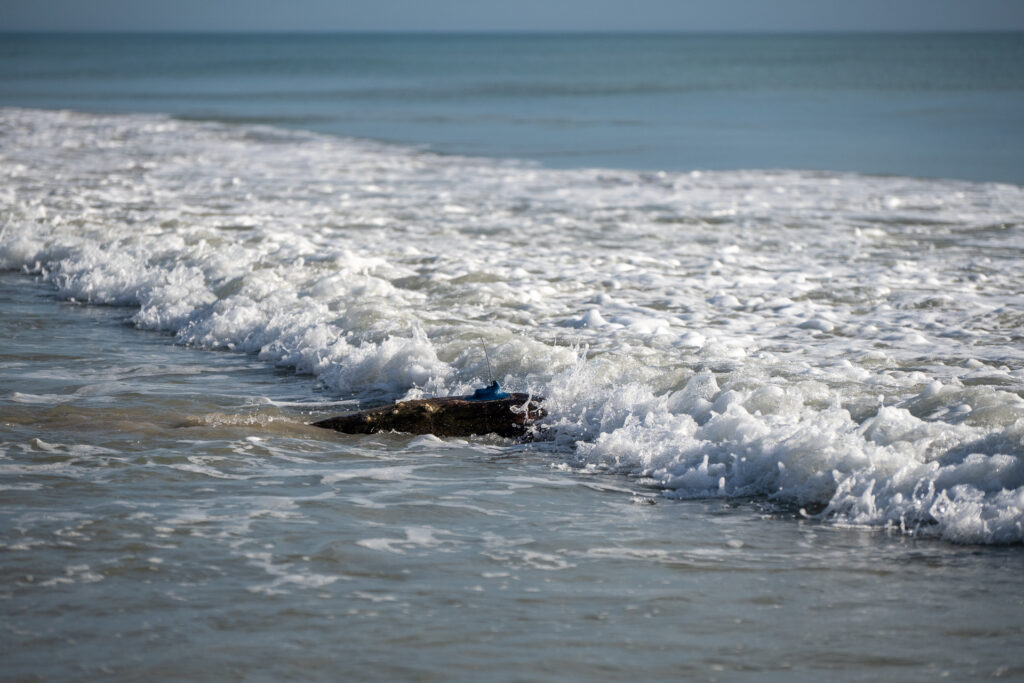
I’m hesitant to turn away, but the day is warming quickly, and I’m increasingly jealous of those sipping caffeine. Sweaty and happy, my mind full of turtles big and small, I make my way back into the world.
How You Can Help the Sea Turtles in Florida
You don’t have to travel to a turtle release to make a difference (but you also should, if you have the opportunity to!).
Here are a handful of ways to help Florida’s sea turtles:
Respect Nesting Areas: If you’re at the beach, leave nests undisturbed and avoid using flashlights at night.
Reduce Light Pollution: Turn off outdoor lights at night, especially close to the coast, to avoid disorienting hatchlings and nesting turtles.
Cut Down on Waste: Choose reusable bags and bottles to reduce plastic waste. Plastic waste creates a significant threat to sea turtles.
Support Conservation Efforts: Donate to or volunteer with organizations like the Sea Turtle Conservancy.
Spread Awareness: Share what you learn about turtles with friends, family, or on social media.
Your actions, no matter how small, can create a lasting impact for our shelled friends.
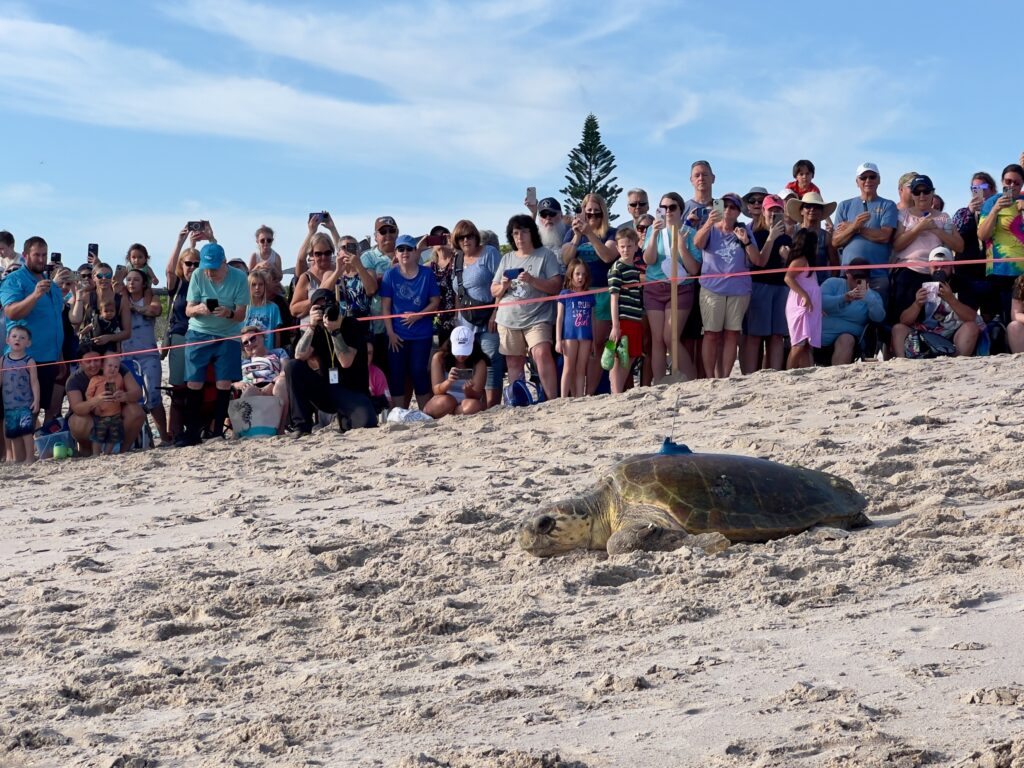
Seeing the Tour de Turtles gave me the chance to observe sea turtles up close and feel the timelessness of their journey in both the sea and on land. Was it worth waking up for? Absolutely. Sharing that moment with others, I felt the power of a shared experience in wild Florida, surrounded by wild Floridians.
Track this year’s Tour de Turtles participants on their ocean migrations at tourdeturtles.org.

